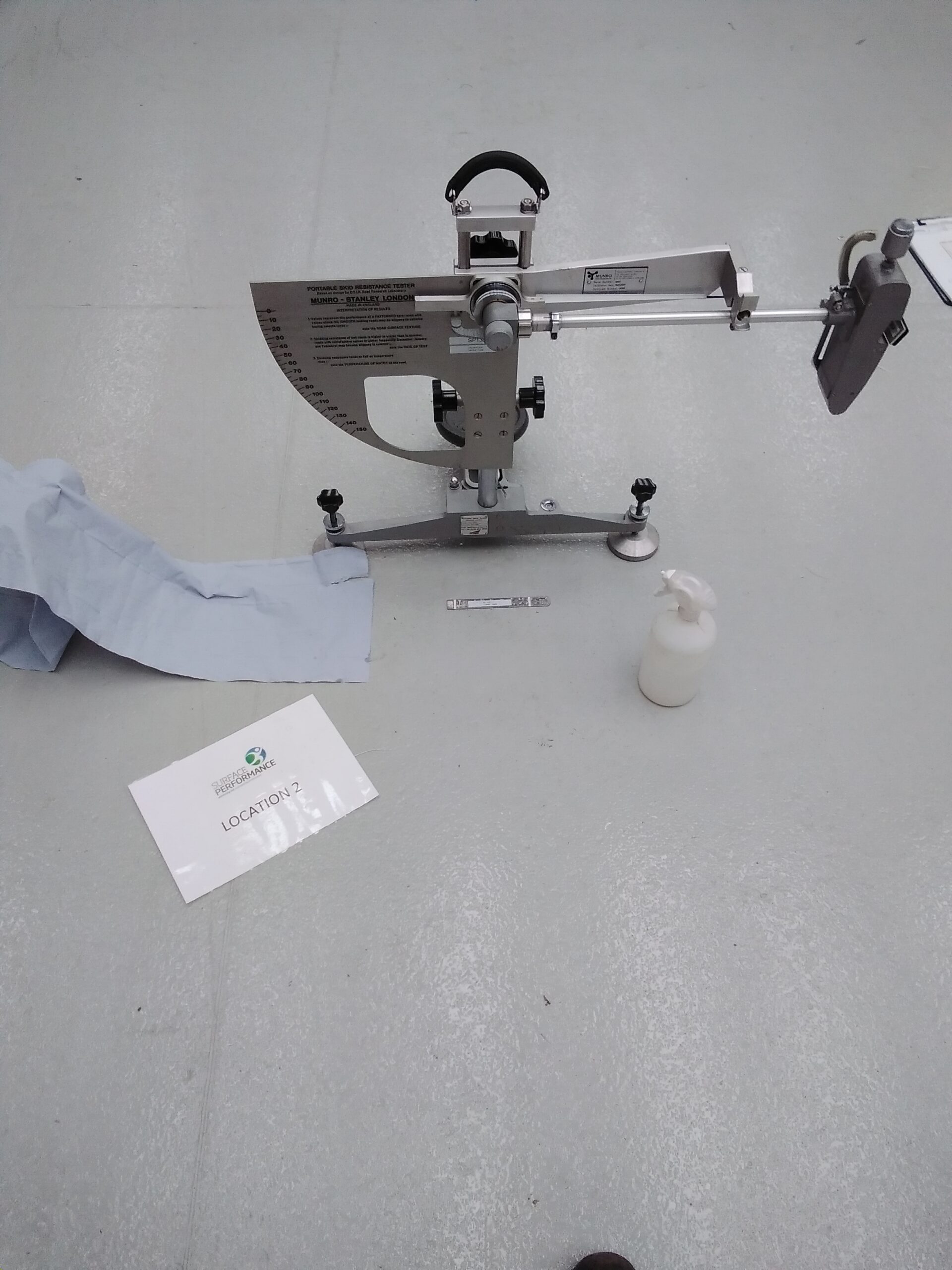Pendulum Slip Testing Equipment – What is it? And how does it work?
In a world filled with diverse flooring surfaces, ensuring safety in both domestic and commercial spaces is paramount. Slips and falls can lead to injuries, lost productivity, and costly legal liabilities. This is where pendulum slip testing equipment comes into play, offering a scientific approach to measuring and enhancing the slip resistance of various flooring materials. In this blog, we’ll dive into the world of pendulum slip testing equipment, its importance, and how it contributes to safer environments.
Understanding Slip Resistance
Slip resistance is a critical property of any floor surface, and it refers to the material’s ability to provide sufficient traction to prevent people from slipping. It is determined by several factors, including the type of flooring material, its texture, and the presence of contaminants like water, oils, or other substances that may reduce friction.
The Importance of Slip Testing
Slip and fall accidents are a significant concern worldwide, accounting for a substantial number of injuries and insurance claims every year. Slip resistance testing helps in assessing and enhancing the safety of various flooring materials, providing a way to measure their ability to prevent accidents. This is particularly important in public spaces such as shopping malls, airports, hospitals, and restaurants, where diverse foot traffic and environmental conditions can increase the risk of slips and falls.
Pendulum Slip Testing Equipment: How Does It Work?
Pendulum slip testing equipment is a valuable tool used to evaluate the slip resistance of flooring materials. It operates on the principle of simulating a walking motion, making it a practical representation of real-world scenarios. Here’s how it works:
- The pendulum tester consists of a weighted arm that swings down and impacts the surface being tested, much like a footstep.
- A rubber slider is attached to the pendulum, which comes into contact with the surface. The slider is loaded with a known weight.
- As the pendulum strikes the surface, it experiences both forward and lateral movement, mimicking a person’s walking motion.
- The resulting friction and resistance to movement are recorded by the device.
- The results are expressed as a Pendulum Test Value (PTV), which indicates the slip resistance of the surface. The higher the PTV, the more slip-resistant the surface is.
Benefits of Pendulum Slip Testing
- Accurate and Reproducible Results: Pendulum slip testing equipment provides precise and repeatable results, ensuring consistent evaluations of flooring materials.
- Realistic Simulations: The pendulum’s swinging motion replicates human walking, making it a reliable indicator of how a surface will perform under real-world conditions.
- Safety Compliance: Many regulatory bodies and industry standards require slip resistance testing, making pendulum testing an essential component of safety compliance for flooring manufacturers, installers, and property owners.
- Informed Decision-Making: With accurate slip resistance data, decision-makers can choose the right flooring materials for specific environments, enhancing safety and minimizing the risk of accidents.
Pendulum slip testing equipment plays a crucial role in ensuring the safety of indoor and outdoor spaces. By providing objective and standardized slip resistance measurements, it empowers individuals, businesses, and organisations to make informed decisions regarding flooring materials, maintenance, and safety protocols.
As the demand for safer environments continues to grow, pendulum slip testing equipment remains an indispensable tool in creating secure spaces for everyone. It not only contributes to reducing accidents but also minimizes financial and legal risks associated with slip and fall incidents. In a world where safety is paramount, the pendulum keeps on swinging, reminding us to prioritise slip resistance as an essential aspect of our built environment.

